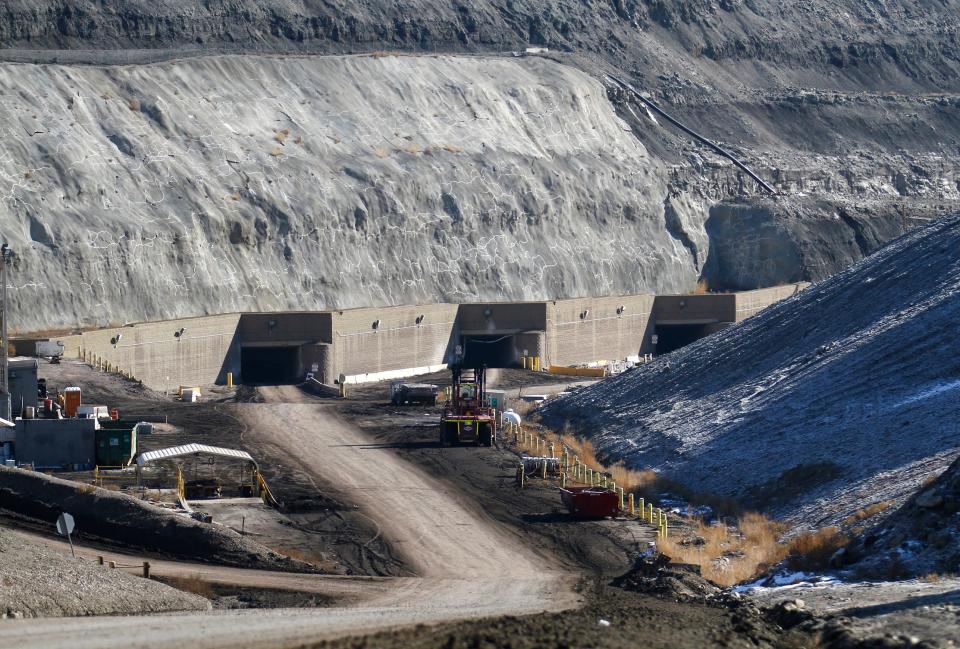New study fingerprints methane emission sources in the San Juan Basin
It’s been eight years since NASA’s announcement that they identified a methane hotspot the size of Delaware over the San Juan Basin, and a new study by researchers from Los Alamos National Laboratory fingerprints some of the sources.
This study was published in the journal Geophysical Research: Atmosphere in September and, according to the lab, the research will help identify sources of methane emissions so that measures can be taken to reduce the pollution.
Scientists compared the level of ethane to methane in emissions to determine if they came from coal or natural gas and oil. The researchers used measurements taken from 2013 through 2021.
More:New treatment technology debuts at San Juan Regional Cancer Center
While natural gas primarily consists of methane, it also contains other hydrocarbons, including ethane.
Since 2014, politicians from San Juan County have repeatedly attempted to characterize the methane hotspot as a result of naturally-occurring emissions. The methane hotspot received national attention as the largest in the United States.
Manvendra Dubey, a climate scientist who led the project, said the Los Alamos team did not look at naturally occurring methane. He pointed to past studies, including some cited in the team’s paper, that previously examined that topic.
“We have a good idea of the human emissions in the region and it’s pretty significant,” Dubey said.
He said more work is needed to determine the emissions from natural seepage of methane. The ethane to methane ratio would likely be similar to what is seen at the coal mine vent, he said.
Natural seepage of methane occurs from the Fruitland coal outcroppings in La Plata County, Colorado.
Fossil fuel extraction is a key part of the San Juan Basin economy. The landscape is dotted with gas, oil and coal-bed methane infrastructure.
Aaron Meyer, the lead author and a graduate student researcher at the lab, said the variety of fossil fuel sources extracted in the San Juan Basin has, in the past, made it hard to determine where the methane emissions are coming from. The Los Alamos research aims to correct that.
One of the larger sources of methane emissions is the San Juan Mine, which is no longer producing coal and workers are in the process of shutting it down and ultimately sealing it. The mine has a vent shaft to remove gasses like methane from the underground corridors.
Meyer said the vent shaft emits ethane in addition to methane.
The ratio of ethane to methane emitted from the mine shaft is consistent and is lower than what is typically seen from gas and oil extraction, he said.
While the mine emissions are consistent, the ratio of ethane to methane from natural gas or oil extraction has more variability. Meyer said the reasons behind the various ratios are not fully understood, however they can include the processes happening on the ground, such as extraction or processing methods, as well as what is happening in the formation underground.

There can also be differences in the ratio for what is known as dry gas and what is known as wet gas. Wet gas includes other hydrocarbons that are not oil or gas.
Having the coal mine vent shaft as a stable, consistent signature can help with pinpointing other emission sources. This, Dubey said, could have global implications as there are coal-mine vent shafts throughout the world.
Additionally, the closure of the San Juan Mine could also impact the emissions from it and Dubey said Los Alamos plans on continuing to look at San Juan Basin emissions amid the transition to cleaner energy sources.
Meyer said the team used three different techniques to take measurements. These methods all showed the same consistent ethane to methane signature from the coal mine vent shaft and showed that the oil and gas facilities had different signatures.
The researchers also saw that a larger emission source—the San Juan River gas plant—had reduced emissions following abatement efforts and is no longer one of the larger sources.
Dubey said that shows that identifying sources can lead to them being cleaned up.
From 2016 through 2018, the San Juan River gas plant violated emission laws, according to the New Mexico Environment Department. The owner agreed to pay a $950,000 penalty as part of a settlement reached in 2020.
Dubey said the Los Alamos research creates a kind of forensics tool that will allow for better accountability.
This is important amid climate change as methane is a greenhouse gas.
Los Alamos National Laboratory, the researchers say, is going to continue working to help the San Juan community in the transition to cleaner energy sources.
This story originally appeared in nmpoliticalreport.com.
This article originally appeared on Farmington Daily Times: New study fingerprints methane emission sources in the San Juan Basin

